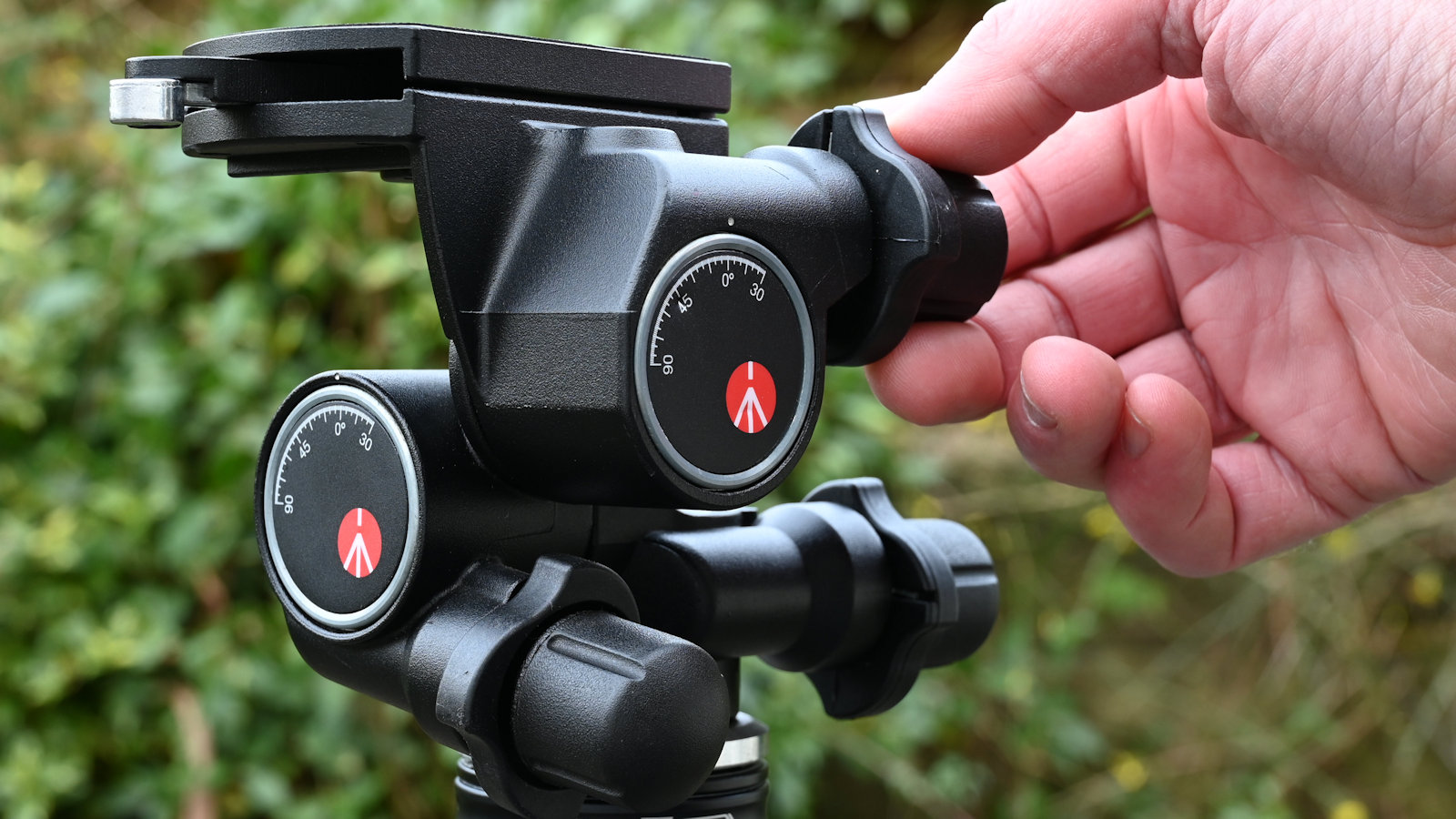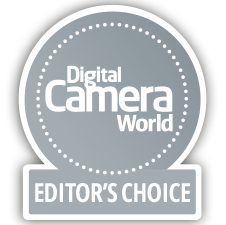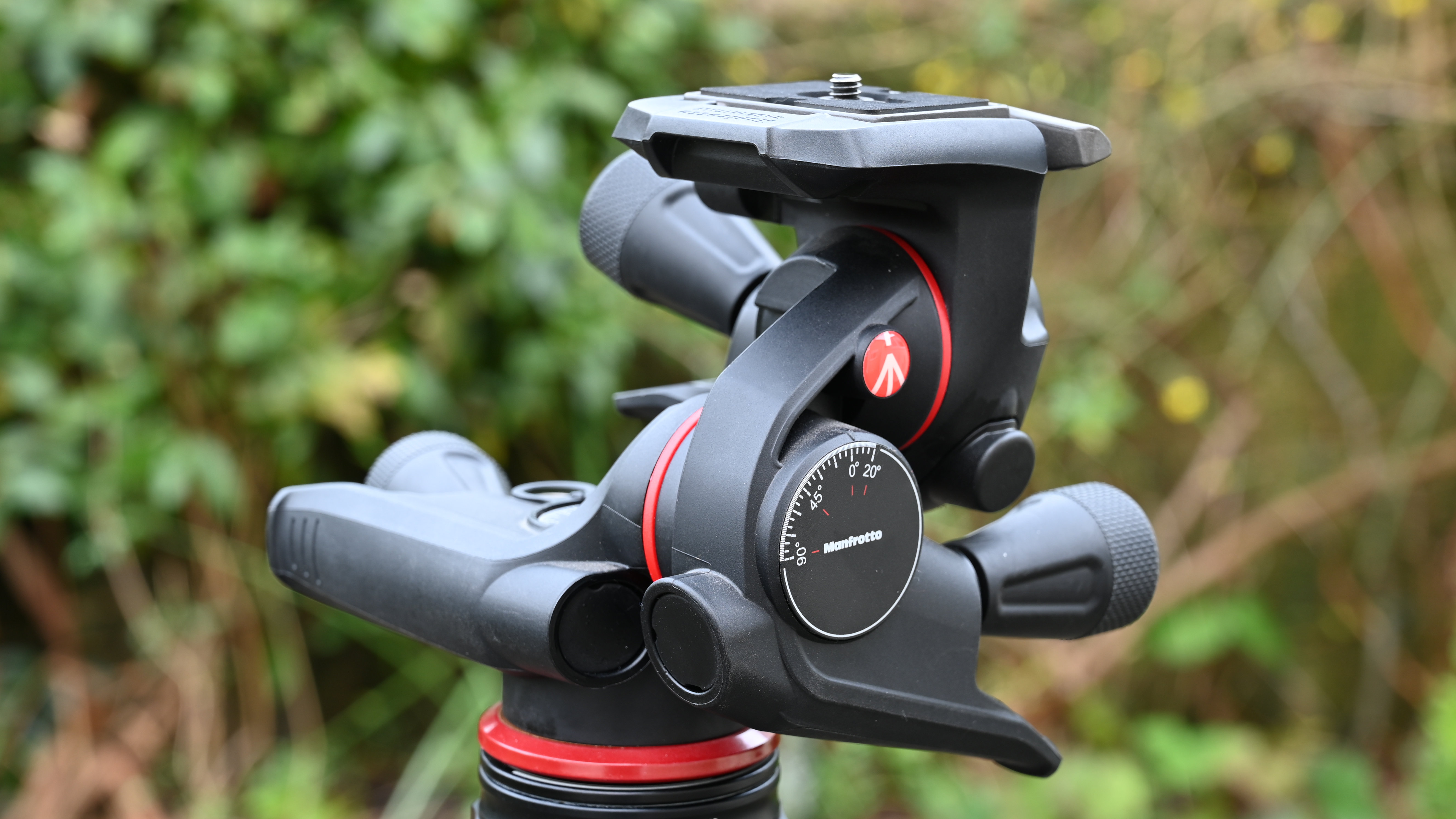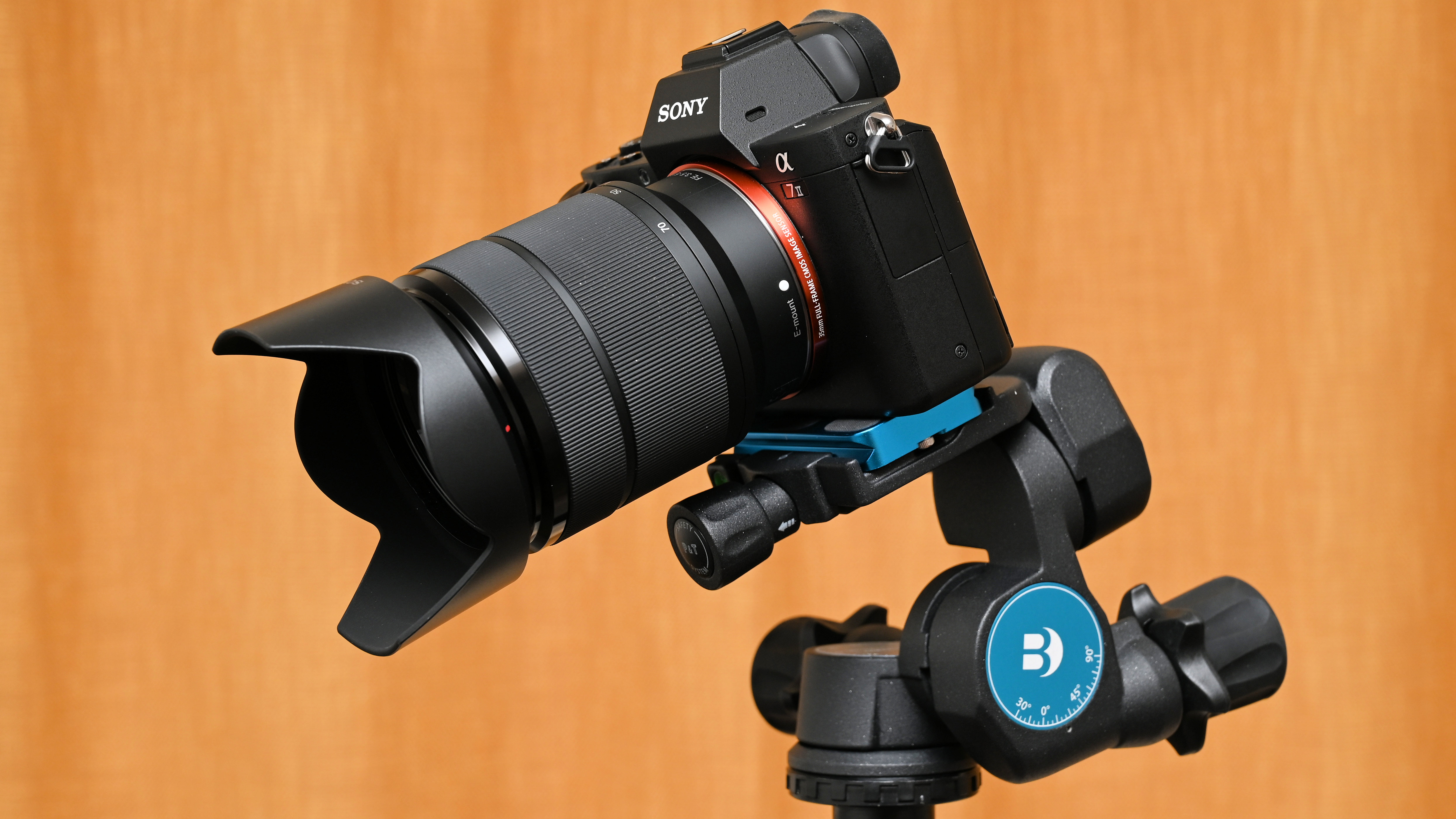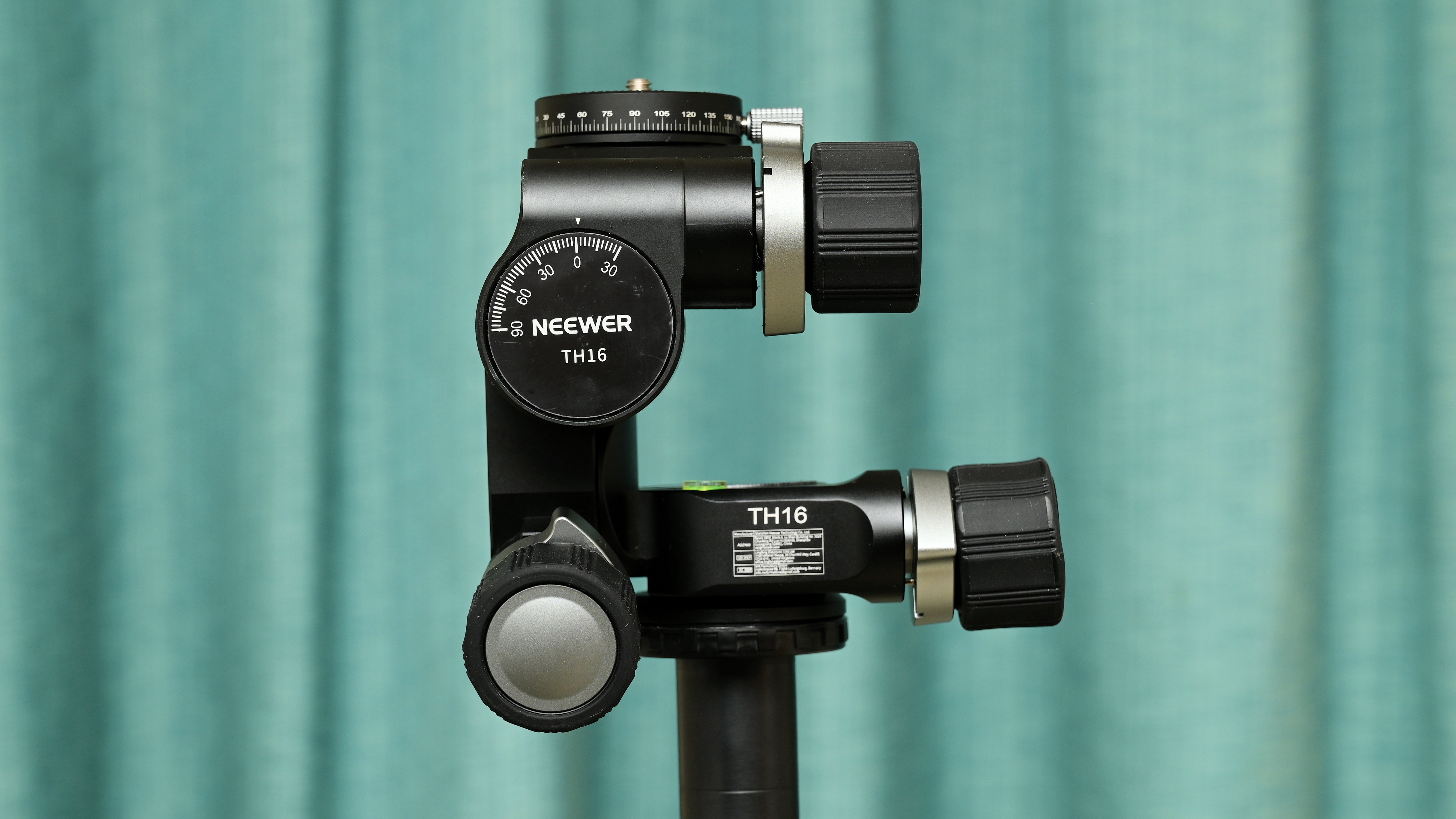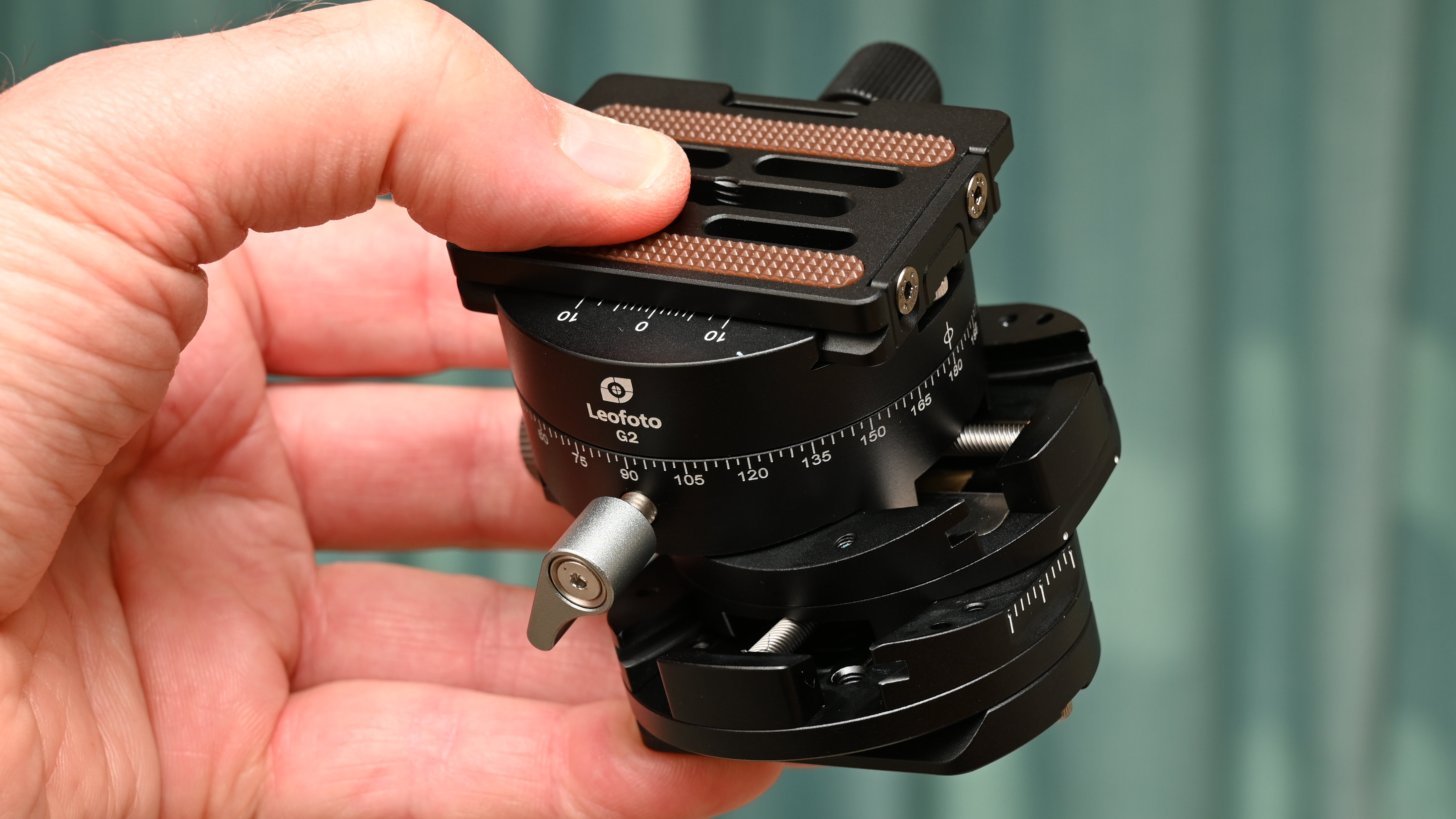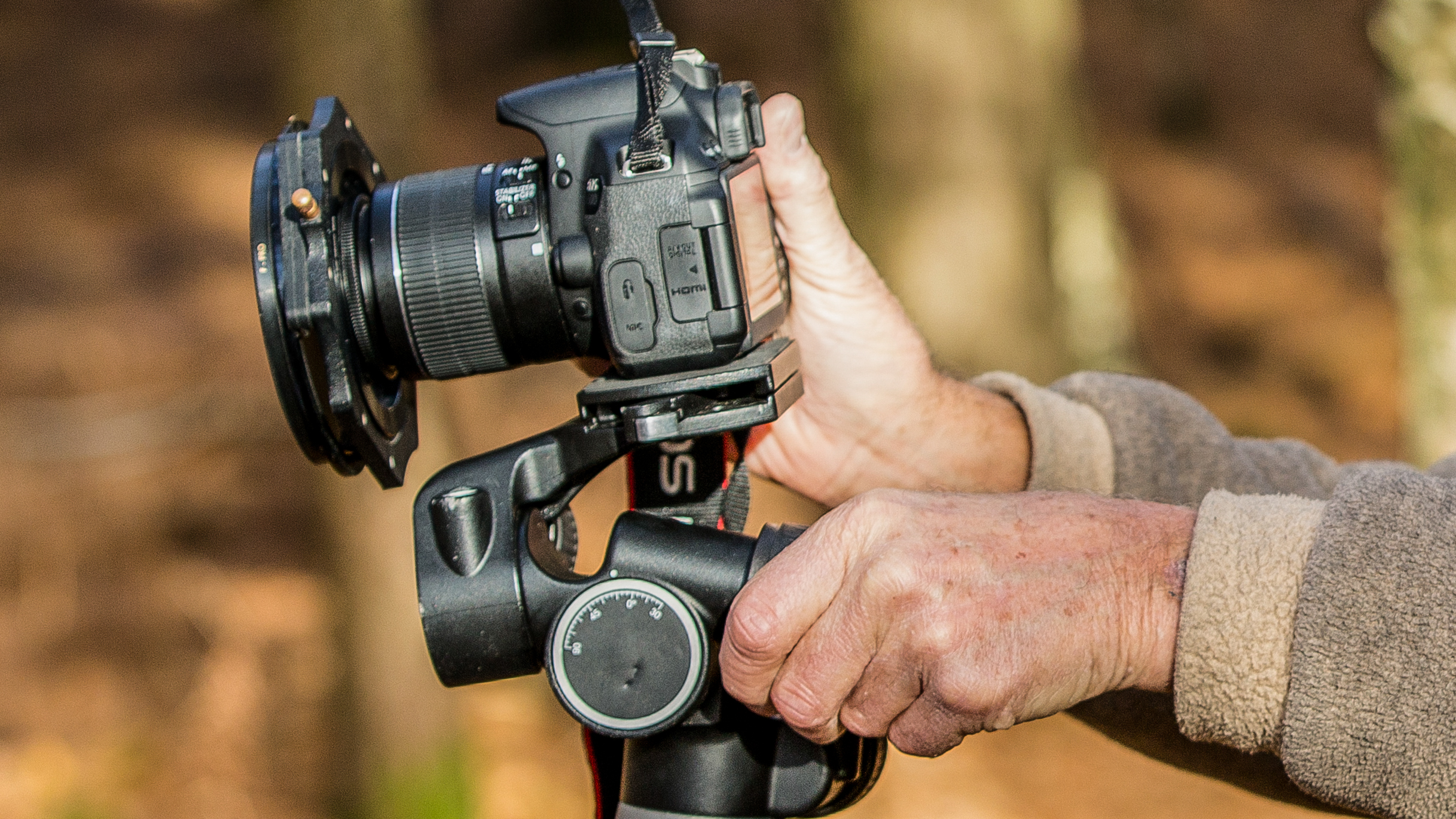The best geared tripod head in 2025: set up your shots with perfect precision
When you need to get your compositions absolutely bang-on, a geared tripod head lets you make fraction-of-a-degree adjustments…
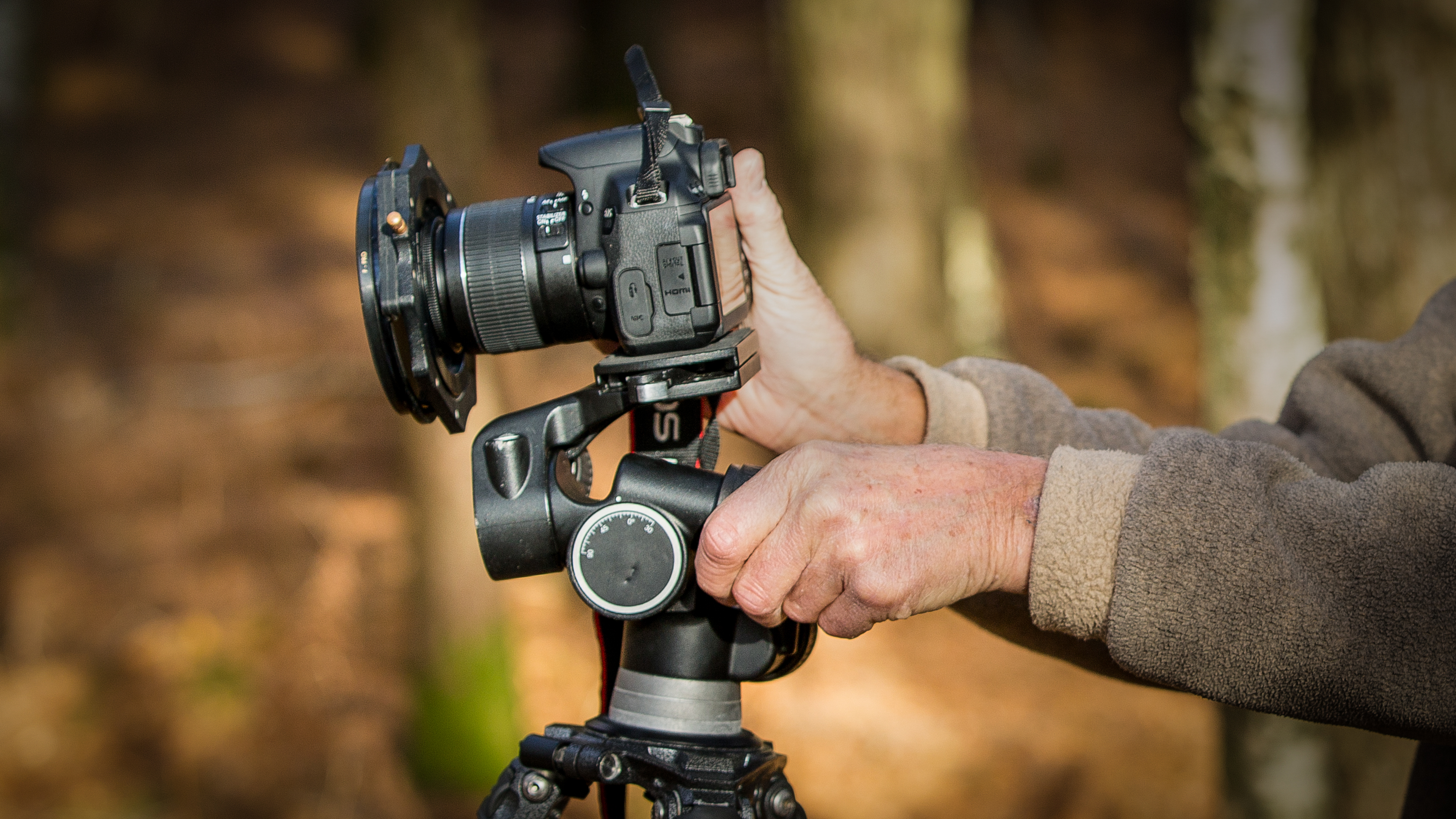
The best geared tripod head is the ultimate option for those who want to precision control of camera positioning. As you might expect, a geared head uses a gear-driven mechanisms to control camera movement. Usually this is across three axes – panning, tilt and yaw. With a geared head, a camera can be very precisely positioned, and then securely locked into place when it's time to shoot
This is what differentiates a geared head from a decent ball head or 3-way head – while these provide solid support for shake-free shooting, they simply don't offer the same level of precision. In studio, landscape or architectural photography, positioning is often critical. Try as you might to adjust a conventional head to your exact requirements, it can often sag or drift slightly after you tighten the clamp and release your grip on the camera.
Geared heads can be are horrifically expensive but I’ve rounded up the best-geared tripod head models on the market that come at more affordable prices. Here’s what they have to offer…

Matthew Richards is a photographer and journalist who has spent years using and reviewing all manner of photo gear. He is an encyclopedia when it comes to just about anything imaging-related – which makes him the perfect choice to pick the best geared heads.
The Quick List
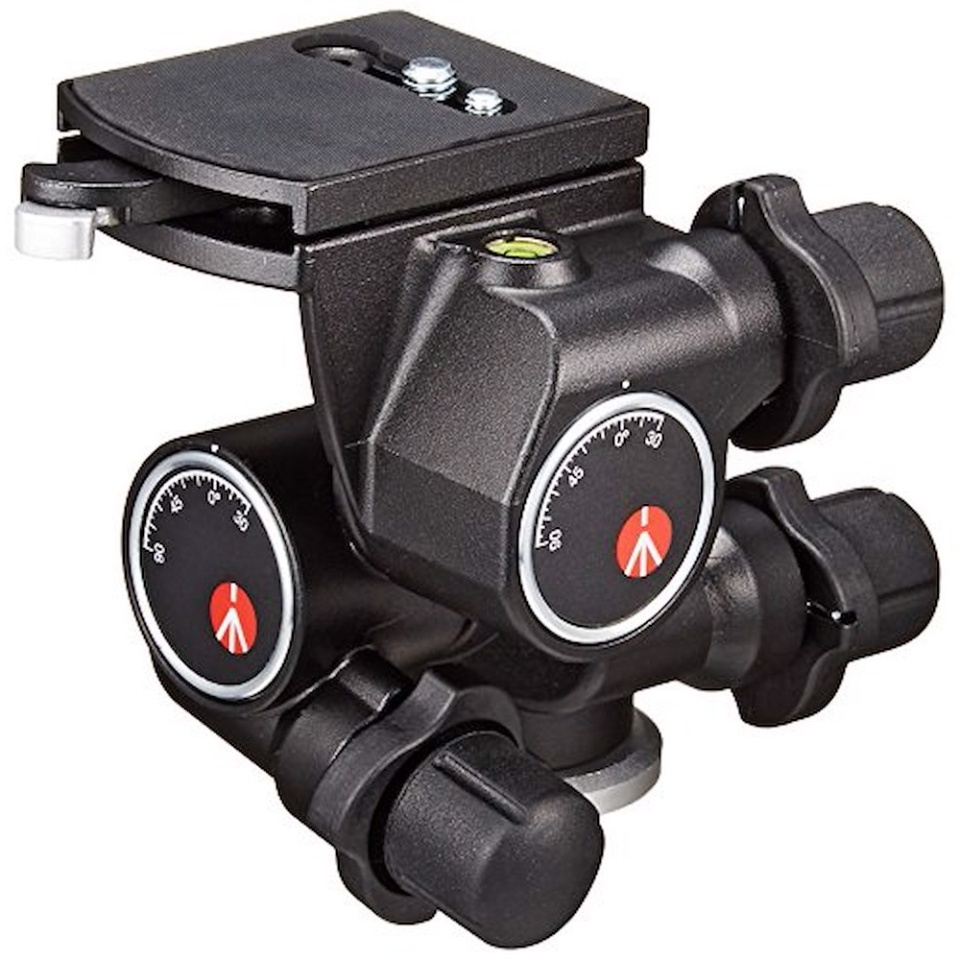
The Manfrotto 410 Junior geared head is my top pick, offering brilliant precision, ease of use and build quality, with a reasonable price tag as well.
Read more below
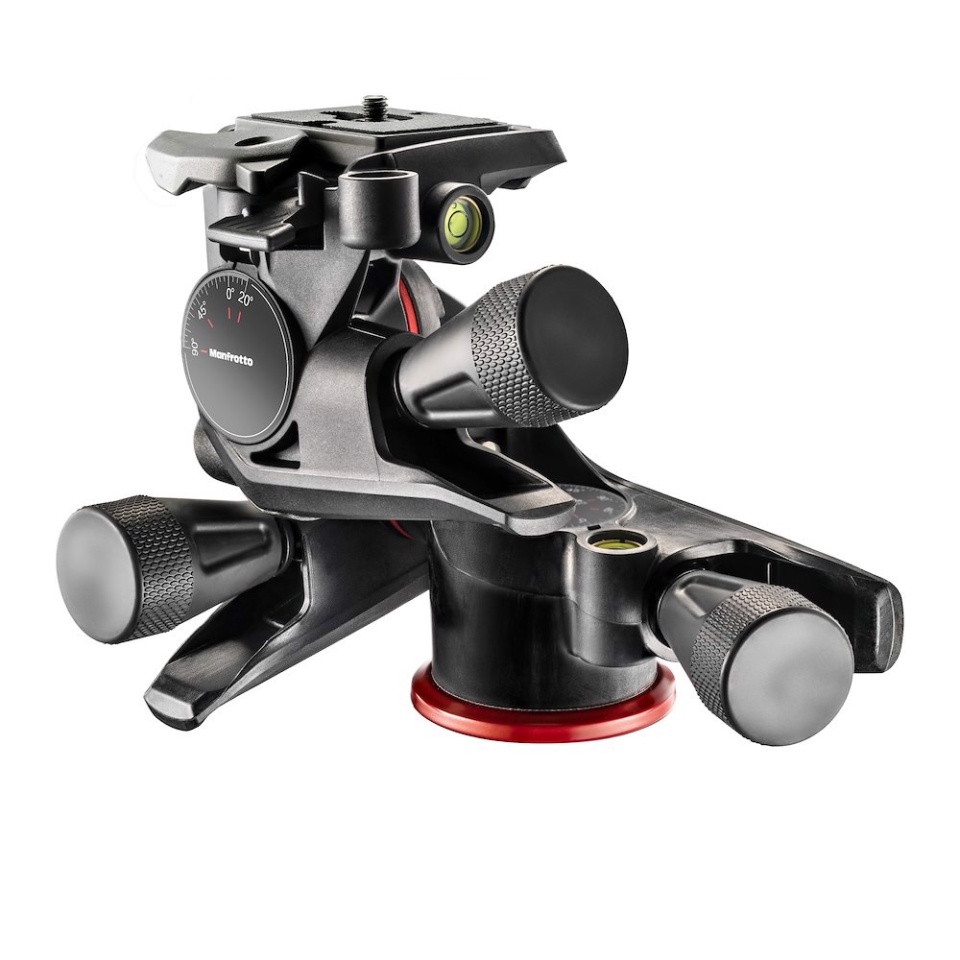
Much lighter than Manfrotto's alternatives, the XPRO head is an ideal choice for anyone who doesn't want to be weighed down too much – just watch the 4kg capacity.
Read more below
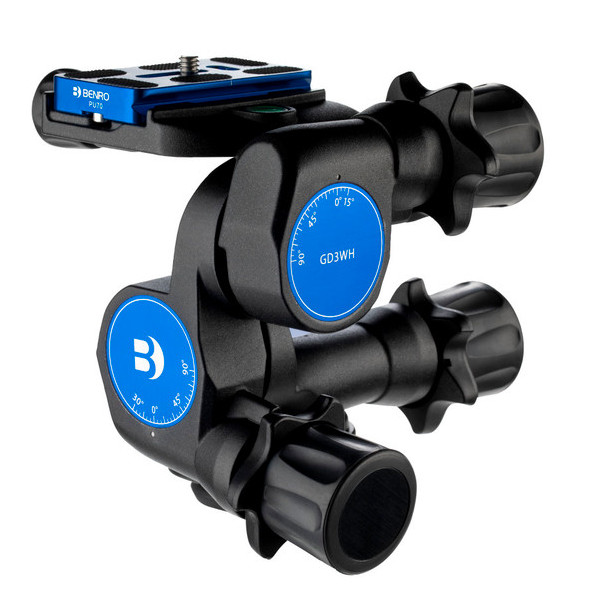
Constructed to high-grade standards using magnesium alloy, Benro's geared head really feels premium – and having an Arca-Swiss plate is definitely a bonus.
Read more below
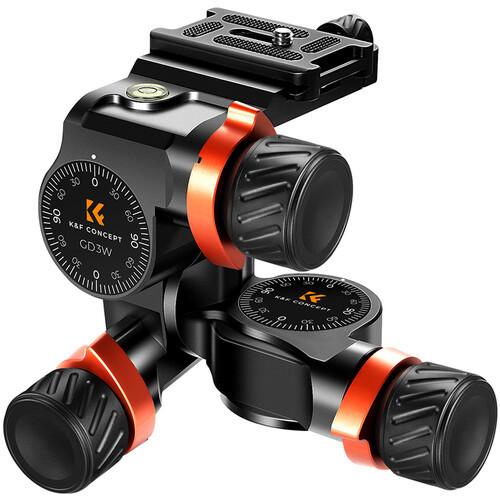
Beautifully made with a high degree of precision, this head is an affordable choice for landscape and outdoor photographers.
Read more below
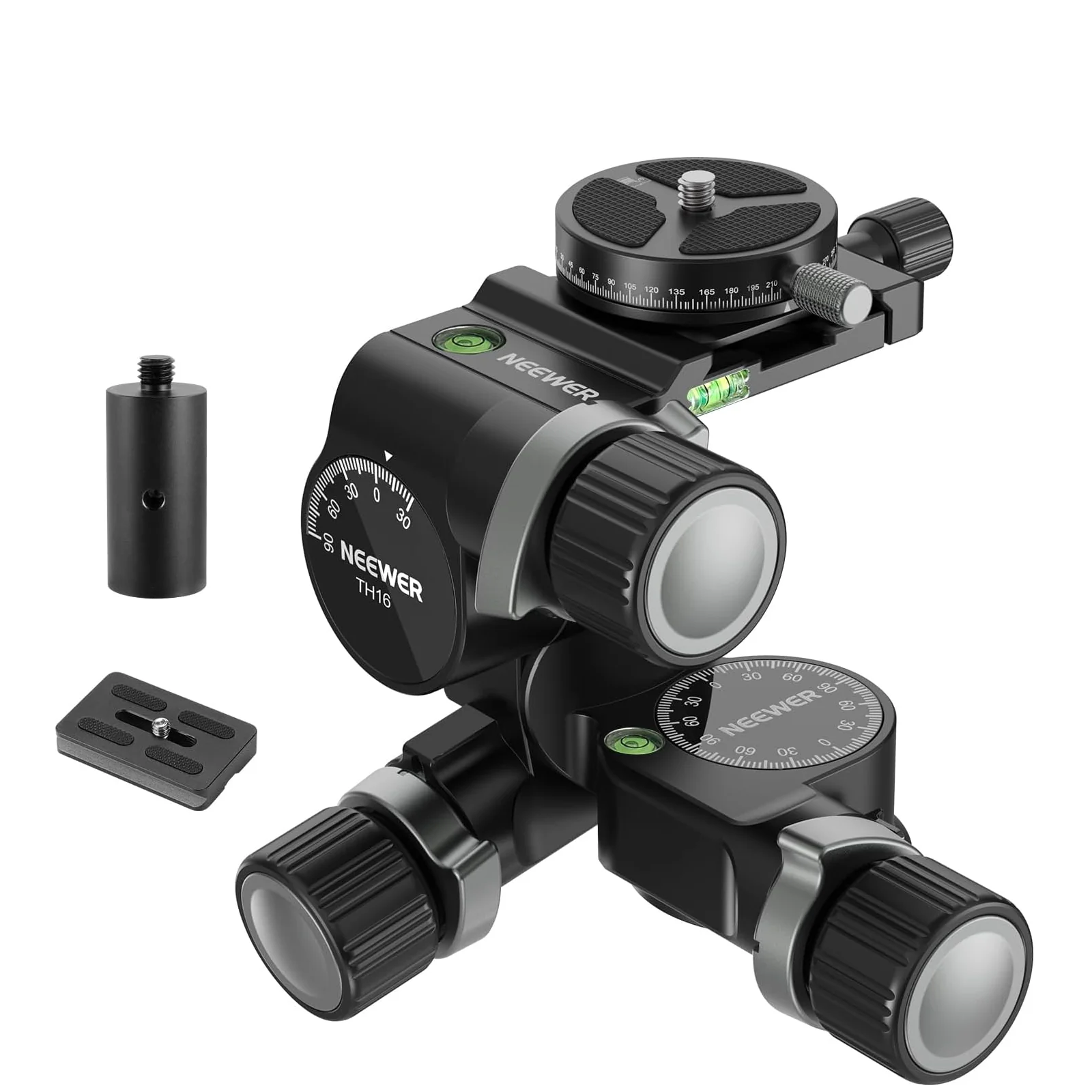
With bubble levels galore, controls knobs that give just a few degrees of movement, and a secondary panning plate, this is a brilliant choice for precision work.
Read more below

This compact design only offers a limited degree of tilt, but for ultra-fine macro work it's the bee's knees
Read more below
Best geared tripod heads
Why you can trust Digital Camera World
Best overall
Specifications
Reasons to buy
Reasons to avoid
My initial impression of the Manfrotto 410 Junior Geared Head was that it felt more substantial than I anticipated – definitely something I'd need to consider for longer hikes. However, this heft translates to a very sturdy and well-built piece of equipment. There are independent geared movements for pan, tilt, and lateral tilt. Each axis has its own snap-lock knob for quick adjustments and a separate rubberized knob within for those incredibly fine, micrometric adjustments.
This dual system is ingenious, allowing the camera to be quickly set up in the general position, followed by dialling in the perfect framing with meticulous accuracy. This level of control is a significant advantage, especially for detailed work like architectural or macro photography, where even a slight nudge can throw off the composition. The included RC4 quick-release plate is secure and stable, fitting snugly into the receiver. It's a bit larger than some other plates, extending slightly beyond the camera body, but this added size contributes to the overall stability. The head also features a bubble level, which is essential for ensuring a level horizon in shots.
The Manfrotto 410 Junior Geared Head delivers on its promise of precise control and stability. While its weight might be a consideration for some, the functionality and build quality make it a worthwhile investment for photographers who prioritize accuracy in their work.
Read our full Manfrotto 410 Junior Geared Head review
Best lightweight head
Specifications
Reasons to buy
Reasons to avoid
The Manfrotto XPRO Geared 3-Way Head has a relatively compact size and weight, which is a welcome change from some of the bulkier geared heads I've used. This makes it feel much more portable without sacrificing too much in terms of stability. There's the usual geared mechanism for all three axes: pan, tilt, and lateral tilt, but what's particularly clever here is the retractable levers. When you need to make large adjustments quickly, you can pull them out and rotate them freely. Then, pushing them back in engages the fine-tuning gears, allowing for incredibly precise movements. This hybrid system feels intuitive and efficient.
I found the friction controls on each axis to be a nice touch, which allow the gears to be loosened slightly for quicker adjustments without fully disengaging them, and is handy when making small tweaks. The build quality feels solid, as I've come to expect from Manfrotto, and the head inspires confidence. It comes with Manfrotto's 200PL quick-release plate, which is a standard and reliable system. It locks securely and gives peace of mind that the camera is safe. There are three bubble levels integrated into the head, making it easy to ensure horizons and verticals are perfectly aligned.
While it might not offer the same level of extreme precision as some higher-end geared heads, the Manfrotto XPRO strikes a fantastic balance between precision, portability, and ease of use. For photographers who need accurate adjustments but also value a lighter setup, this head seems like a really compelling option.
Read our full Manfrotto XPRO Geared 3-Way Head review
Best for build quality
Specifications
Reasons to buy
Reasons to avoid
The craftsmanship of the Benro GD3WH Geared Head is truly impressive, and I think it offers fantastic value for the money. The large, tactile control knobs for fine adjustments feel great in hand. Plus, the long quick-release plate helps in balancing the camera perfectly. The head sits on a 52mm circular base and includes adjustment knobs for panning and forward/rear tilt, along with a third knob for side-to-side tilting. The low gearing is perfect for those very fine adjustments, and the coarse adjustment wheel is handy for quicker movements.
I found the camera platform's long cradle, designed for its Arca-Swiss type quick-release plate, very secure, especially with the added security pins that prevent accidental sliding. The large bubble level and two spirit levels are helpful in ensuring everything is perfectly level. One minor thing I noticed is that the control knobs can sometimes interfere with the tripod spider if your tripod doesn't have an extending center column, but Benro offers a spacer to address this.
Performance-wise, the Benro GD3WH is outstanding. It's incredibly stable – rock-solid, in fact – and the controls operate smoothly. The head is constructed from magnesium alloy, with carbon steel and bronze used for the moving parts, which speaks to its durability and smooth operation. Overall, I highly recommend the Benro GD3WH Geared Head for its precision, excellent build quality, and great value.
Read our full Benro GD3WH Geared Head review
Best for landscapes
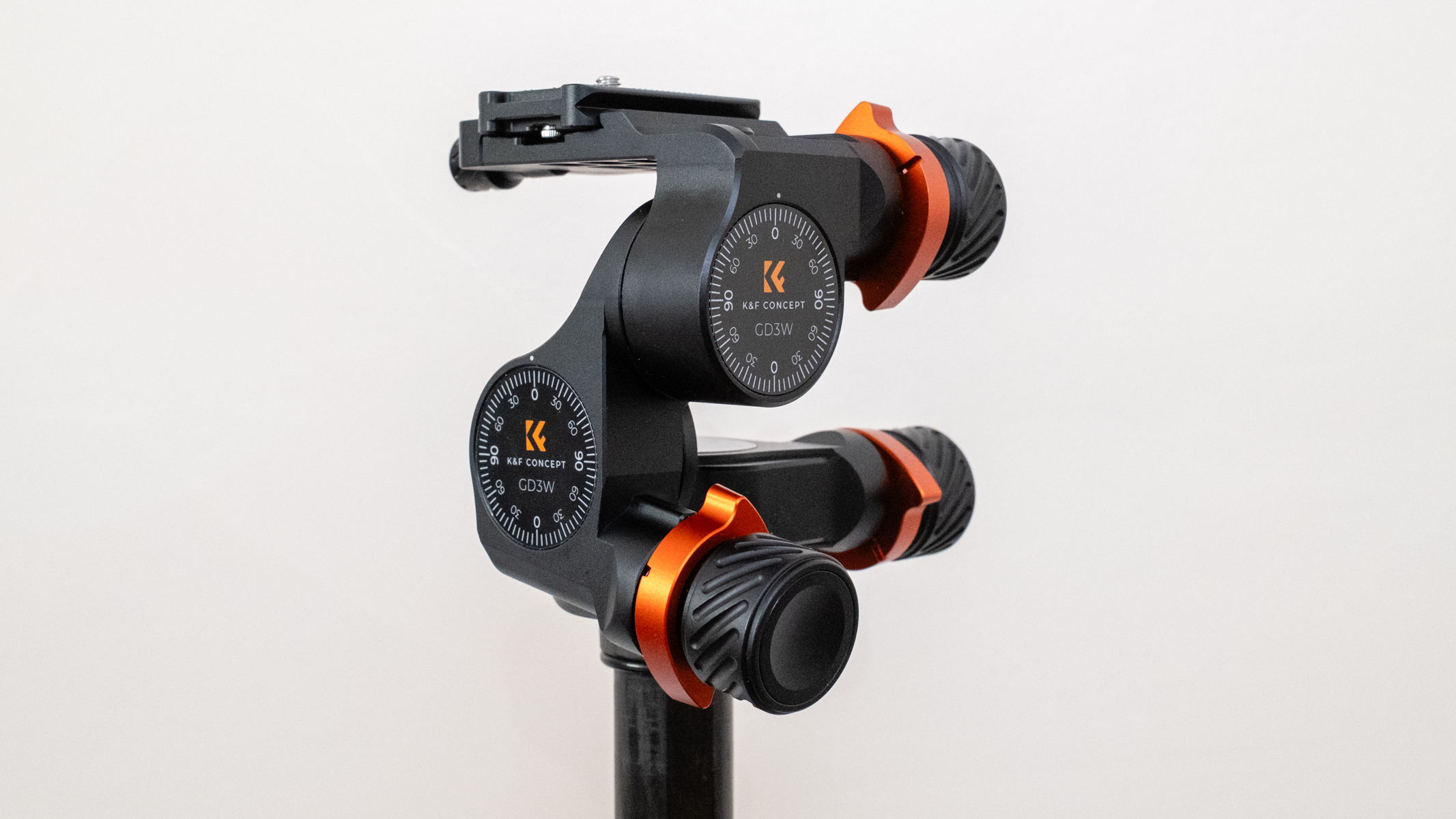
Specifications
Reasons to buy
Reasons to avoid
My first impression of the K&F Concept 3-Way Geared Tripod Head was that it's surprisingly lightweight and compact for a geared head, and so it's a good option for photographers who need precision without excessive bulk. The geared movements for pan, tilt, and roll feel reasonably smooth, allowing for those fine adjustments that are so crucial for architectural and product photography. The inclusion of large, easy-to-grip knobs for each axis is a definite plus. I found it straightforward to dial in the exact composition I was aiming for without any jerky movements. The knobs offer a good amount of resistance, preventing accidental shifts once you've locked them in place.
But while it offers precise adjustments, I did notice that the range of motion on the tilt axes isn't as extensive as some other geared heads I've used. This might be a limitation for certain shooting scenarios where extreme angles are required. Also, while the build quality seems decent for the price point, it doesn't quite have the same robust feel as some higher-end geared heads on the market.
However, considering its affordability and relatively lightweight design, the K&F Concept 3-Way Geared Tripod Head presents a compelling option for photographers who are looking to step up from a standard ball head to something with more precise control without breaking the bank. It’s a solid entry-level geared head that delivers good performance for its price.
Read our full K&F Concept 3-Way Geared Tripod Head review
Best for precision
Specifications
Reasons to buy
Reasons to avoid
One of the standout features of the Neewer TH16 3-way geared tripod head is its ability to enable extremely precise movements. It offers both coarse and fine adjustments, giving you a full range of movement in any direction you can imagine. Its three micrometric control knobs, along with the twist-action levers, allow for independent adjustments of panning, tilt, and swivel. I found this particularly useful for achieving perfect placement and leveling, which is crucial in architectural and landscape photography, where even the smallest adjustments can make a big difference.
I also appreciate the solid and sturdy build of the TH16. It's highly resistant to flexing and vibrations, which is essential for capturing sharp and stable images. The head comes with multiple bubble levels and a spirit level, ensuring that your camera is perfectly leveled, even on uneven terrain. The secondary panning base is another great addition, allowing for smooth and level panning, even if your tripod legs aren't perfectly positioned.
While the TH16 is a bit chunkier and more fiddly compared to a ball head, the level of precision and control it offers is well worth the trade-off. The control knobs on my review sample were a bit stiff initially, but I expect they'll loosen up with more use. Overall, the Neewer TH16 is a top-class geared head that provides excellent value for money. It's competitively priced, especially when compared to similar models from Manfrotto. If you're looking for a reliable and precise tripod head for your photography needs, I highly recommend considering the Neewer TH16.
Read our full Neewer TH16 review
Best compact
Specifications
Reasons to buy
Reasons to avoid
It was the design of the Leofoto G2 geared pan head that immediately caught my eye. Rather then the usual chunky arms and knobs for adjusting tilt, swivel and pan, it has a minimalist cylindical aesthetic, with a pair of understanted control knobs for tilting in both front/back and side-to-side directions, plus a 360-degree panning plate on top, along with a small locking knob.
The G2 is perfect for making those small, critical adjustments needed in architectural, landscape, and macro photography. The head allows for up to 10 degrees of tilt on each axis, and the calibrated scales, marked in 2-degree increments, are a thoughtful touch. This limited degree of tilt doesn't allow for vertical downward or extreme-angle shooting, but it can be mounted easily to a ball head or 3-way head using its Arca-Swiss type dovetail.
Performance-wise, the G2 really shines when you need to precisely position your camera for level shots, especially in landscapes and architectural settings. The tilting adjustments are smooth and precise, with no unwanted sag or flex. The panning mechanism is equally smooth, making it great for both video and panoramic stills. The fact that the panning mechanism is at the top ensures a level horizon throughout a full rotation. If you need fine and precise 2-way tilting for level photography and smooth panning, the Leofoto G2 is an excellent choice.
Read our full Leofoto G2 review
How to choose a geared head
When choosing a geared head, it’s good to take its base diameter into consideration and ensure it’s a good match for the mounting platform on your tripod legs. Naturally, the maximum payload should also be sufficient for the heaviest camera setup that you want to use with the head.
A geared head may offer bubble or spirit levels, which can be a great help for leveling the camera. There are three separate screw-action knobs for adjusting front/back tilt, lateral tilt and panning position. Typically, a full 360-degree turn of an adjustment knob will result in a mere 7-10 degrees of movement in either tilting plane of the head, enabling you to make the finest of adjustments with ease.
The main construction material is typically aluminum, but some geared heads are made from technopolymer (high-grade plastic) or magnesium alloy. This tends to be less of a pressing concern than it is with a tripod, but is worth paying attention to nevertheless.
How we test tripod heads
When we look at geared tripod heads, the main areas of testing are build quality and performance. Build quality encompasses things like the materials and how durable they are, as well as how fit for purpose each individual part is – something that is important for a mainstay piece of camera equipment, and especially so for a geared tripod head, which has a lot of moving parts and high precision requirements
The performance of a geared head is tested in real-world scenarios with a camera mounted on top. All the features are tested, particularly the geared movement actions for smoothness and reliability. Locking mechanisms are tried and tried again to make sure they are both robust and reliable. We also look at the weight and bulk of the head, assessing how portable it is.
FAQs
What is a geared tripod head used for?
In a word, precision. A geared tripod head offers fundamentally the same freedom of camera movement as a 3-way head, but the gear-driven mechanism allows you to be much more precise. It's possible to make millimetre-specific adjustments with a geared head, and the locking mechanism should ensure the camera doesn't drift after you've set it in place (if it does, your head may have a fault).
This kind of precision is key in a number of applications. In landscape and architecture photography, where you need to get your horizon lines dead straight and your camera positioning securely locked, a geared head can be hugely useful. They're also often used in studio photography, where it's a common requirement for a camera to be in the exact (and we do mean exact) same position for a number of shots.
Read more:
The best tripod for your camera
The best travel tripods right now
The best iPhone tripods and supports
The best monopods
The best pan and tilt tripod heads
Best gimbal heads for tripods
The best panoramic tripod heads
The best camera deals, reviews, product advice, and unmissable photography news, direct to your inbox!
Matthew Richards is a photographer and journalist who has spent years using and reviewing all manner of photo gear. He is Digital Camera World's principal lens reviewer – and has tested more primes and zooms than most people have had hot dinners!
His expertise with equipment doesn’t end there, though. He is also an encyclopedia when it comes to all manner of cameras, camera holsters and bags, flashguns, tripods and heads, printers, papers and inks, and just about anything imaging-related.
In an earlier life he was a broadcast engineer at the BBC, as well as a former editor of PC Guide.
- Adam WaringGuides Editor
